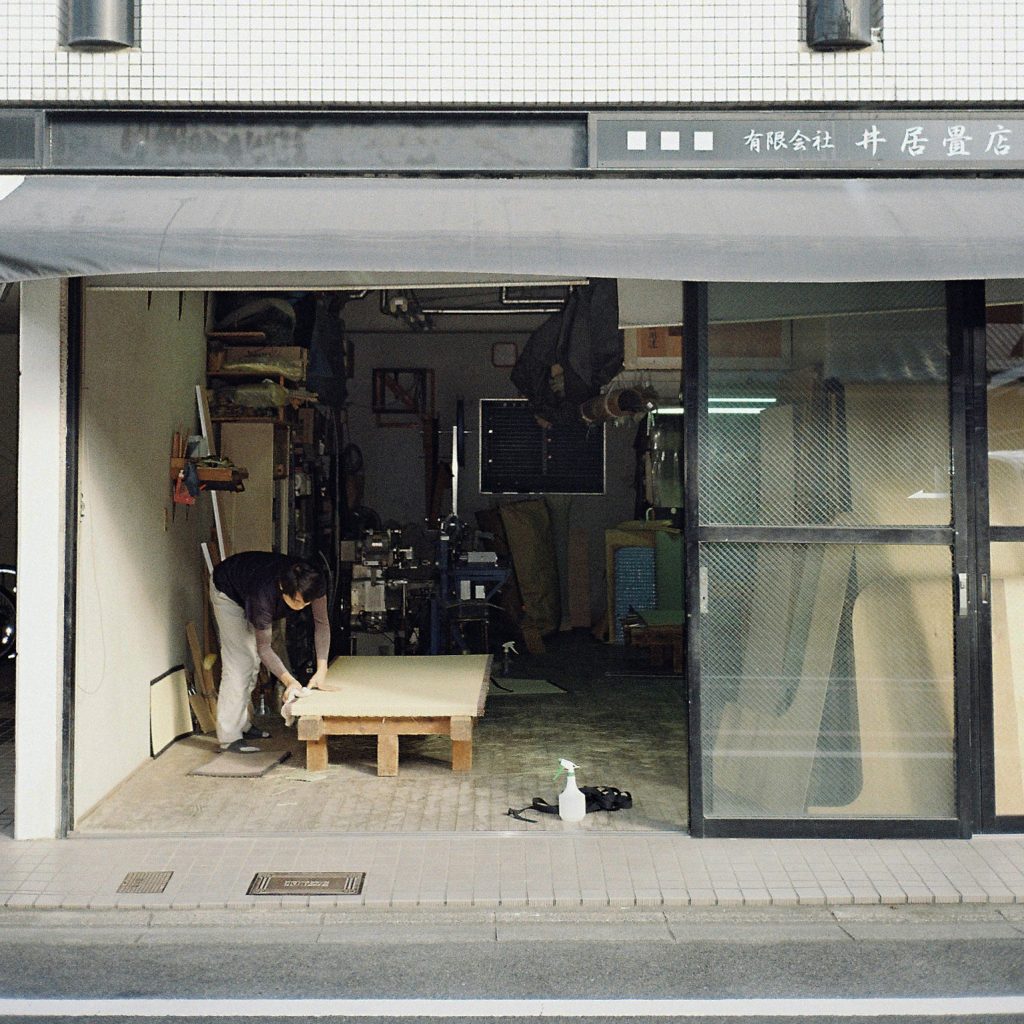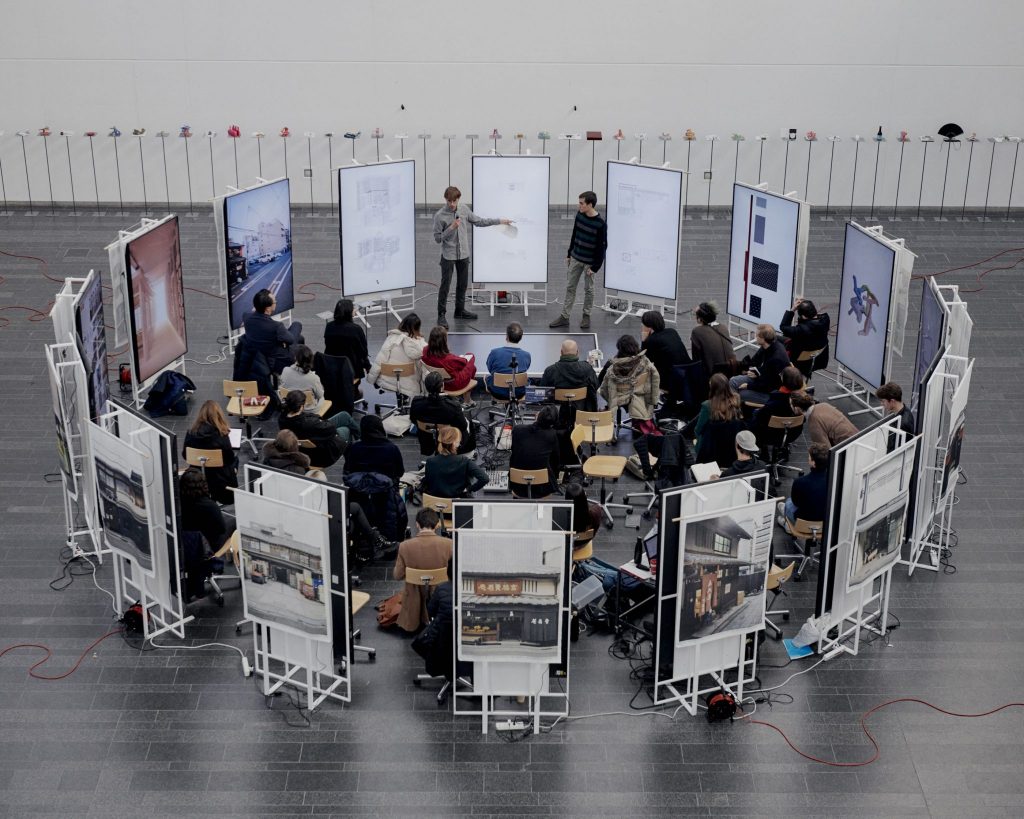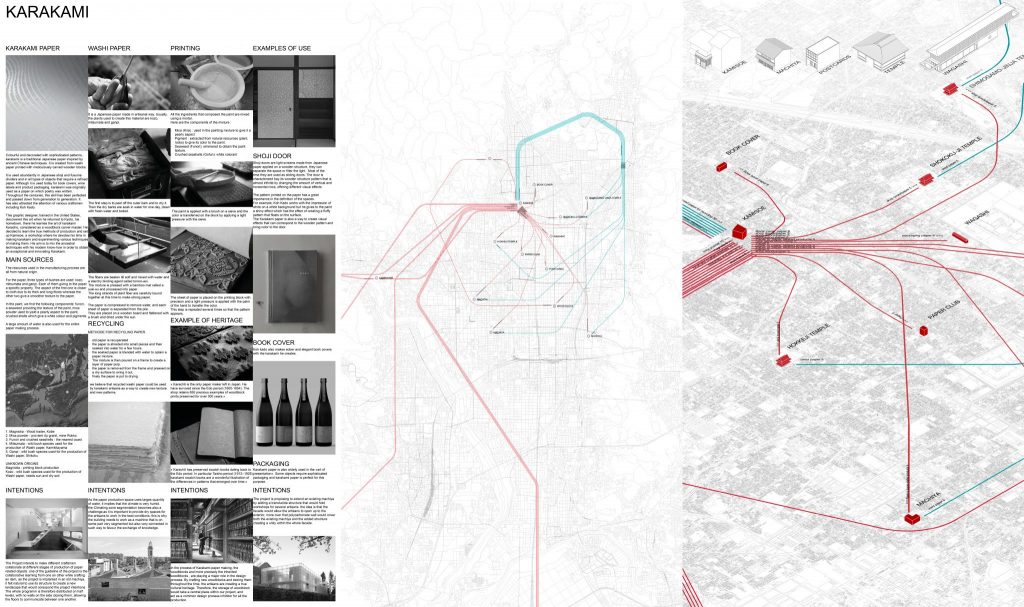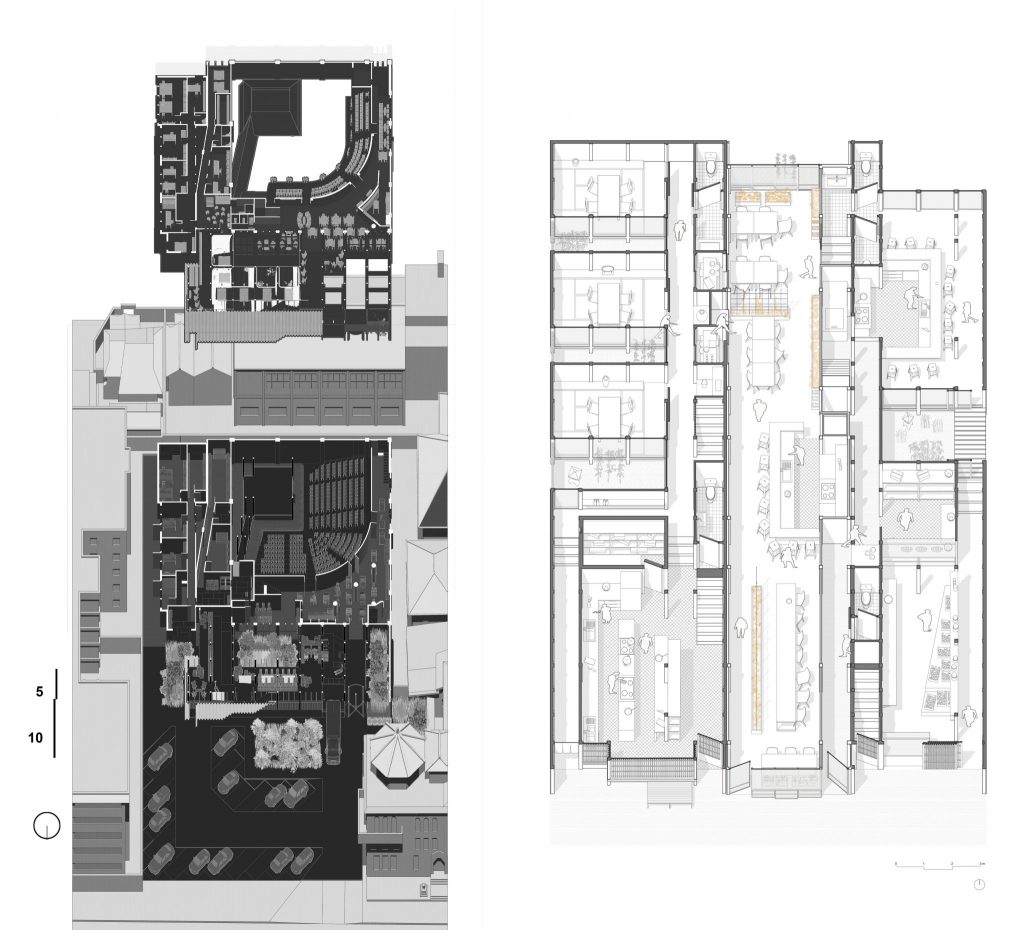Atelier Huang Fall 2022

Since its glory days as the capital of Japan (794 AD), Kyoto has managed to cultivate a flourishing tradition of artisanship (Shokunin) for over 1200 years. Yet with the recent economic downturn and changing habits of a new generation, artisanship in Kyoto is facing a noticeable decline.
In this experimental studio, we considered Kyoto as our living laboratory for exploring the following questions. What can we learn from Shokunin’s precise and selfless way of making? How can we map the distributed processes at the urban scale that sustain such artisan traditions? Can revitalizing the architecture of the Shokunin catalyze the transformation of a historical city into a circular city?
Circular cities promise to change the way society produces goods, how they are procured and delivered, and how waste is collected and re-entered into the value chain. The transition from a linear city to a circular city, however, requires a new conception of urbanism, a shift from urbanism as a collection of forms and spaces (typologies) to urbanism as a network of matter and flows (processes). Accordingly, the work of the studio was situated between a larger scale, system views of the flows of material and goods in the neighborhood (from linear to circular flows), and a precise acupunctural architectural intervention into an existing artisan building and invention of a circular prototypology.
The students focused In groups of two on a particular Kyoto craft or artisanship and map the material flow of their choice, e.g. from kaiseki (seasonal, traditional cuisine), wagashi (Japanese confections), sake (Japanese alcohol), paper products (Karakami), kyo-shikki (lacquerware), and tatami and architectural parts. The analysis of the different flows that bookend the making of the product, from material sourcing to waste disposal, critically informed the studio’s architectural interventions and socio-ecological transformation of Kyoto that followed In the second half of the semester.



Students | Marwan Abansir, Arudsagini Arutselvan, Veronica Bellenzier, Ilaria Boggiatto, Matthieu Brajou, Josep Coll, Eva Collier, Belen Davila, Battsooj Enkhbaatar, Adam-Joseph Ghadi-Delgado, Olivia Hagen, Katja Heilingbrunner, Elitsa Ilieva, Anja Ils, Baya Imadalou, Irem Keskin, Edouard Lemoisson, Mike Munier, Sean Pasquier, Noémie Perregaux, Pauls Rietums, Iben Schneider, David Steinhausen, Casper Stenbaek, Valentina Takatch, Anthony Viola, Marek Waeber, Dominic Weber, Zhong Yang, Leo Ng Zhang Quan
Professor | Jeffrey Huang, Professor, Director, MxD Lab
Studio tutors | Marcela Delgado, Georg-Christoph Holz, Frederick Chando Kim, Alexandre Sadeghi
Process blog | https://circularkyoto.wordpress.com/